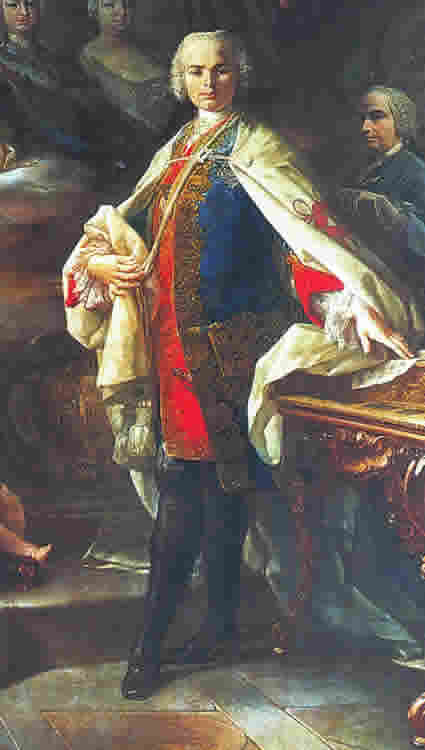Among the numerous musicians to have spent time in Bologna and whose presence has often influenced travellers and music lovers to remain in the city to learn to know them, one certainly has caught our imagination for his exceptional image and for his universal recognition as being the most famous and the best castrato of the eighteenth century: Carlo Broschi, known as Farinelli.
The castrato singers were male singers with a voice of contralto (contraltos) or soprano (sopranistas) particularly involved in sacred music. However, because of their extraordinary gifts, they established themselves as well in theater from the end of the seventeenth to a good part of the following century acquiring fame, honours and wealth on the whole continent. They possessed an outstanding vocal range and flexibility, an absolutely unreal pure tone impossible to reproduce today (for obvious reasons).
Carlo Broschi was born in Naples in 1705, but his link with Bologna developed
 early in theater where he performed already in 1727. He then became
philharmonic academician in 1730 and achieved the citizenship of honour in 1732.
His extraordinary talent was known outside of Italy; he was admired by everyone
who listened to him as is described in this testimony: "The director of the
opera orchestra realized that the four musicians who accompanied Farinelli were
not following him, but in a daze as if struck by lightning. They later confessed
that they were unable to accompany him not only because they felt incapable of
following such exceptional wonder, but also because they were overwhelmed by his
talent." In his old age, after having achieved extraordinary fame and wealth,
Farinelli came back to Bologna where he alternated between the city's residence
(in Via Santa Margherita) and the villa outside Porta Lame of which is preserved
a small chapel recently restored by the Fameja Bulgneisa.
early in theater where he performed already in 1727. He then became
philharmonic academician in 1730 and achieved the citizenship of honour in 1732.
His extraordinary talent was known outside of Italy; he was admired by everyone
who listened to him as is described in this testimony: "The director of the
opera orchestra realized that the four musicians who accompanied Farinelli were
not following him, but in a daze as if struck by lightning. They later confessed
that they were unable to accompany him not only because they felt incapable of
following such exceptional wonder, but also because they were overwhelmed by his
talent." In his old age, after having achieved extraordinary fame and wealth,
Farinelli came back to Bologna where he alternated between the city's residence
(in Via Santa Margherita) and the villa outside Porta Lame of which is preserved
a small chapel recently restored by the Fameja Bulgneisa. It was this villa about which wrote English traveller Charles Burney at the end of the eighteenth century (he had lived in Bologna to meet notorious personalities while on his musical journey) "we could enjoy a very beautiful view of Bologna and of the hills around it", a true setting of art treasures. Burney described it to us: "On the walls of the large living room are hanging portraits of other personalities, almost all royalties who have been his protectors. An in other rooms, I saw beautiful paintings by Ximenes, Murillo and Spagnoletto. He owns a great number of harpsichords fabricated in various countries and a strange British pendulum clock with figurines that play together the guitar, the violin and the cello and whose arms and fingers are put in motion by the pendulum itself."
Farinelli's possessions and extraordinary archives were dispersed upon his death in 1782 even if, to this day, there remains in Bologna other traces of the singer.
The State's archives probably has one of the best portraits of the singer as well as his will and the inventory of his immense wealth. His correspondence with Metastasio can be found at the University Library of Bologna, and some autographed pieces of music are at the Civico Museo Bibliografico Musicale and, most of all, his tomb is preserved in the city.
Indeed, Farinelli, as a performer of the arts, had given precise information in his will concerning his funeral: "I wish for a simple funeral with an accompaniment of 50 poor people each holding a wax candle, and to whom it is to be given a coin after having accompagnied my body to the Chiesa dei Padri Cappuccini where I choose to have my sepulchre."
The Church of Santa Croce was annexed to the convent of the monks which, with the arrival of the French at the end of the eighteenth century, was removed to make room for the Villa Revedin. However in 1810, the remains of the musician were transfered to the monastery of Bologna where can be found his funeral monument dating back to 1845.